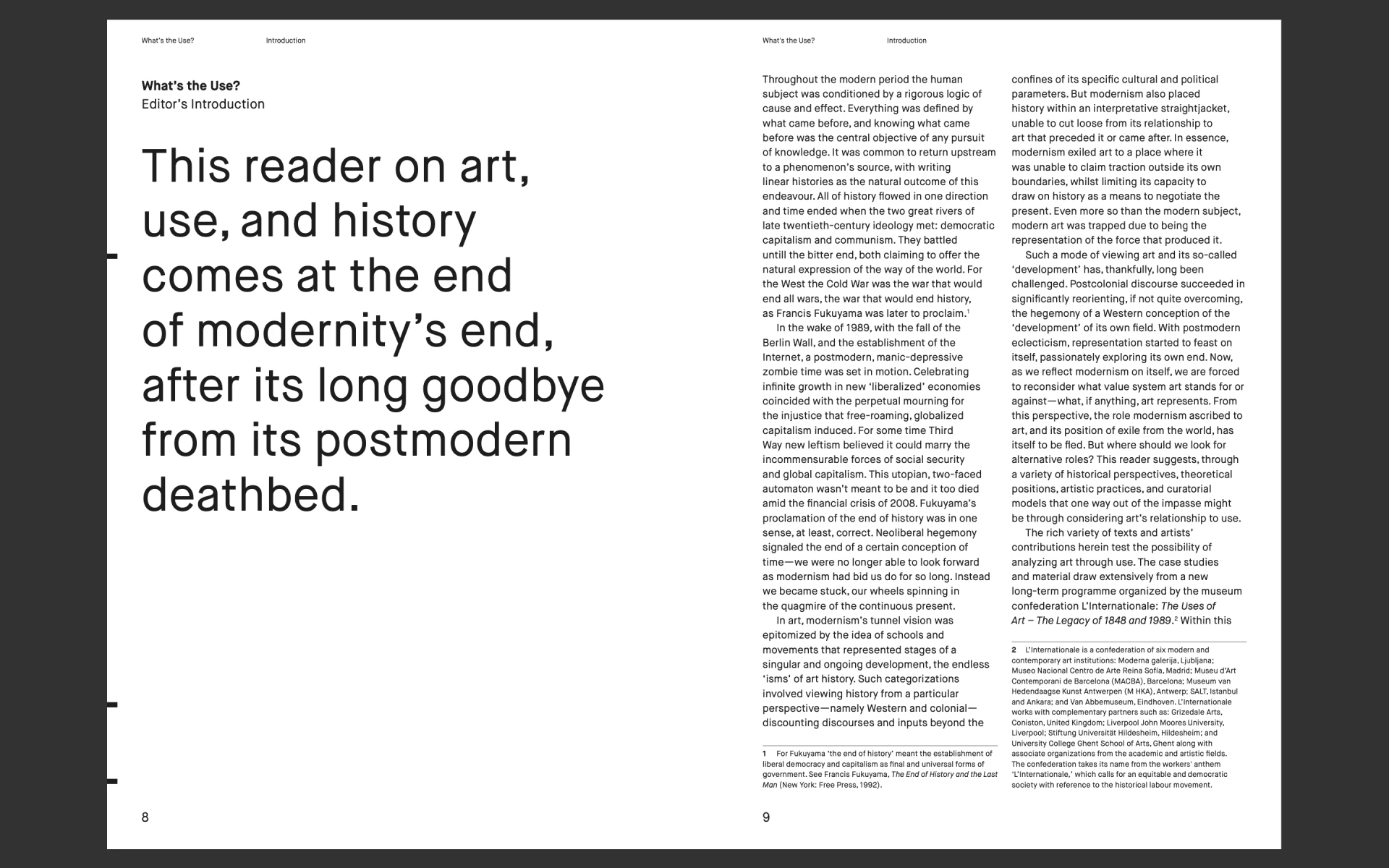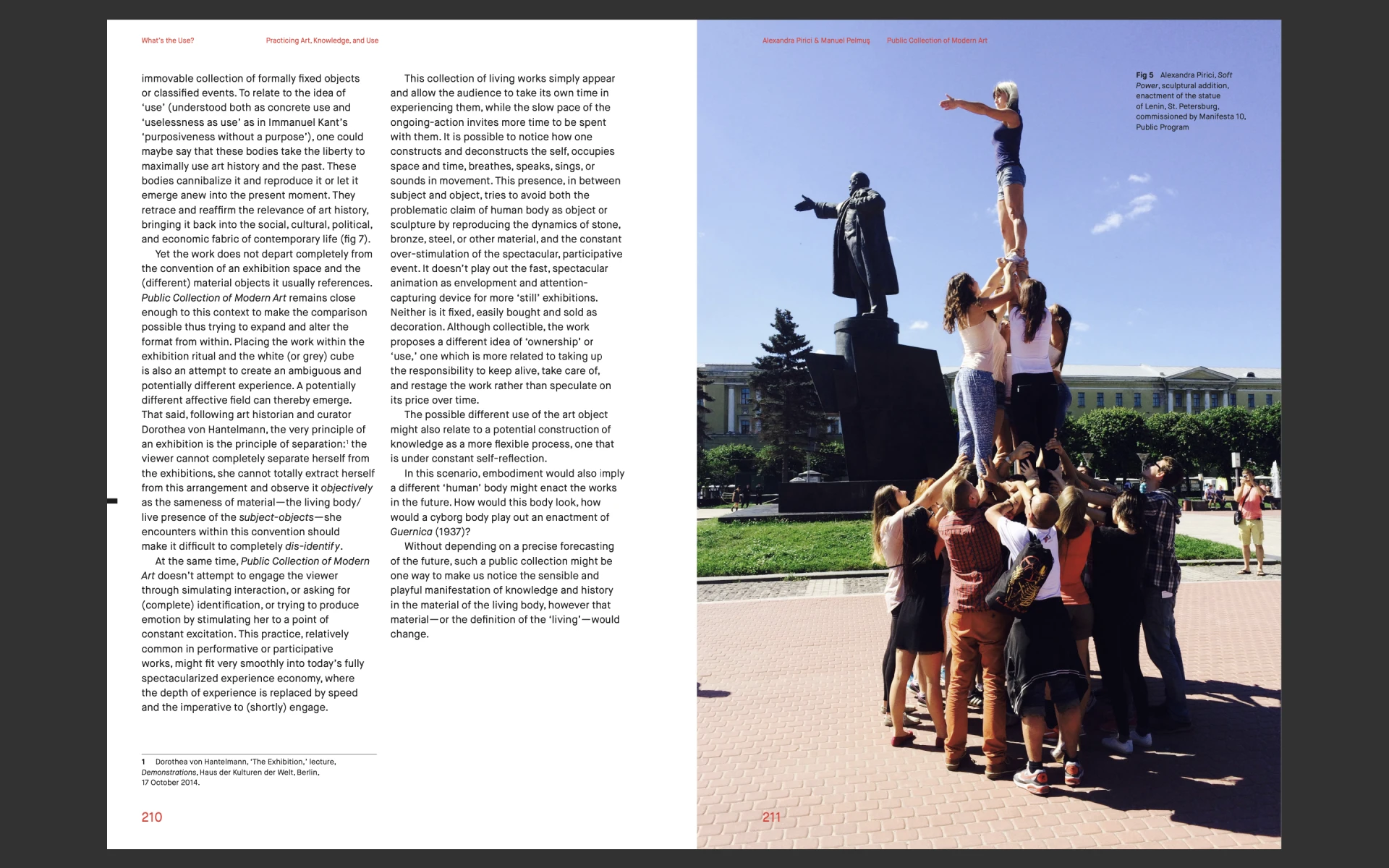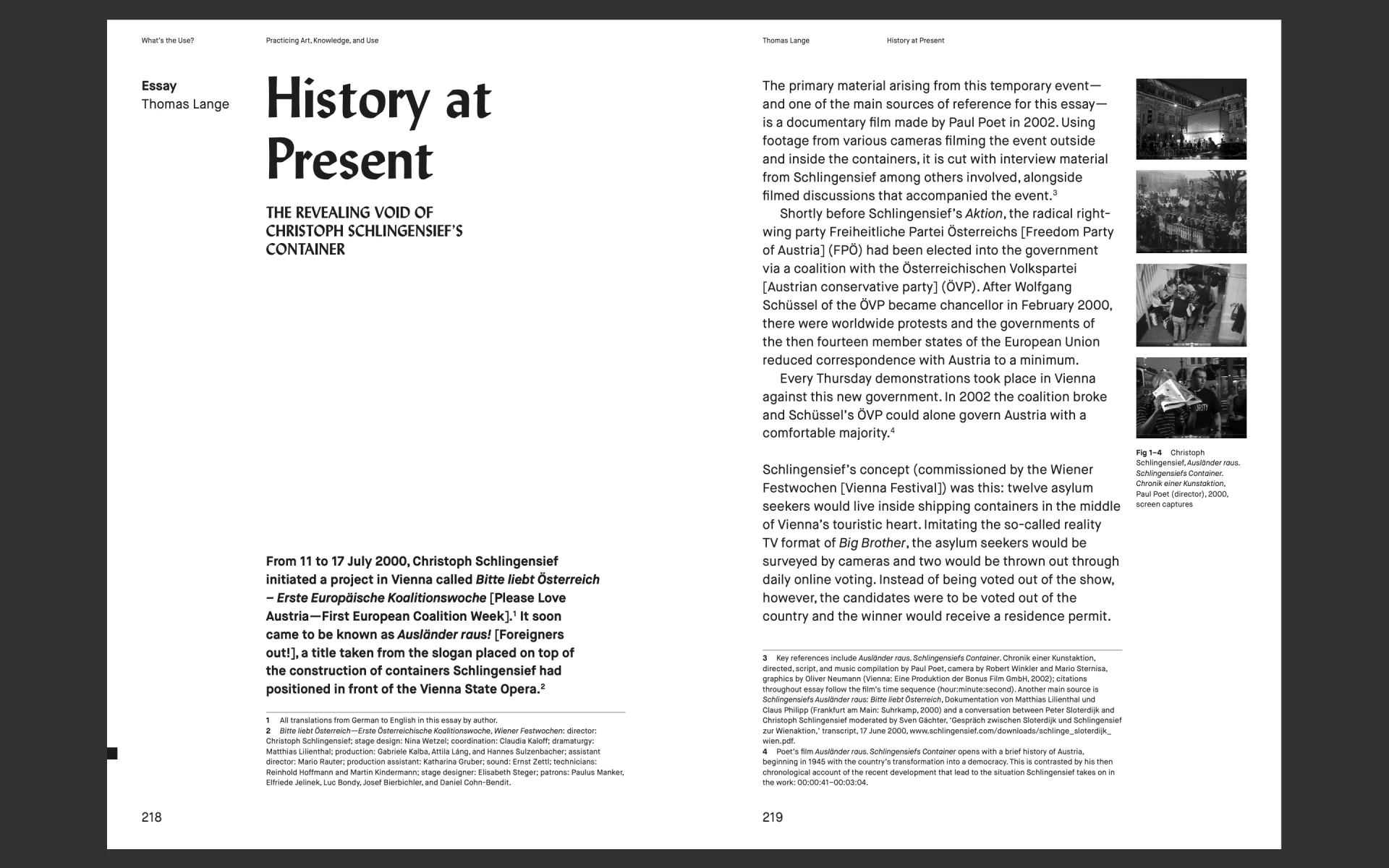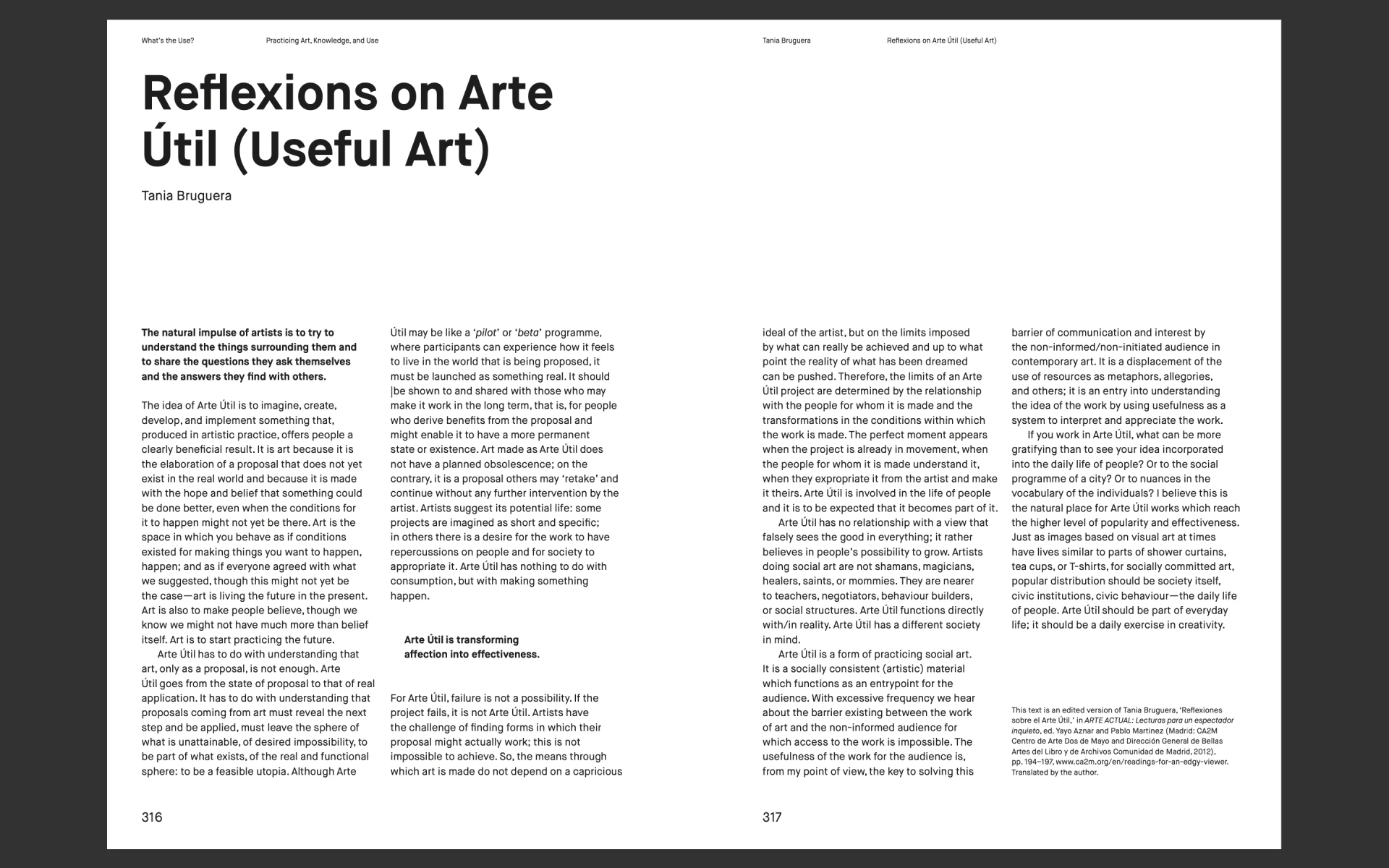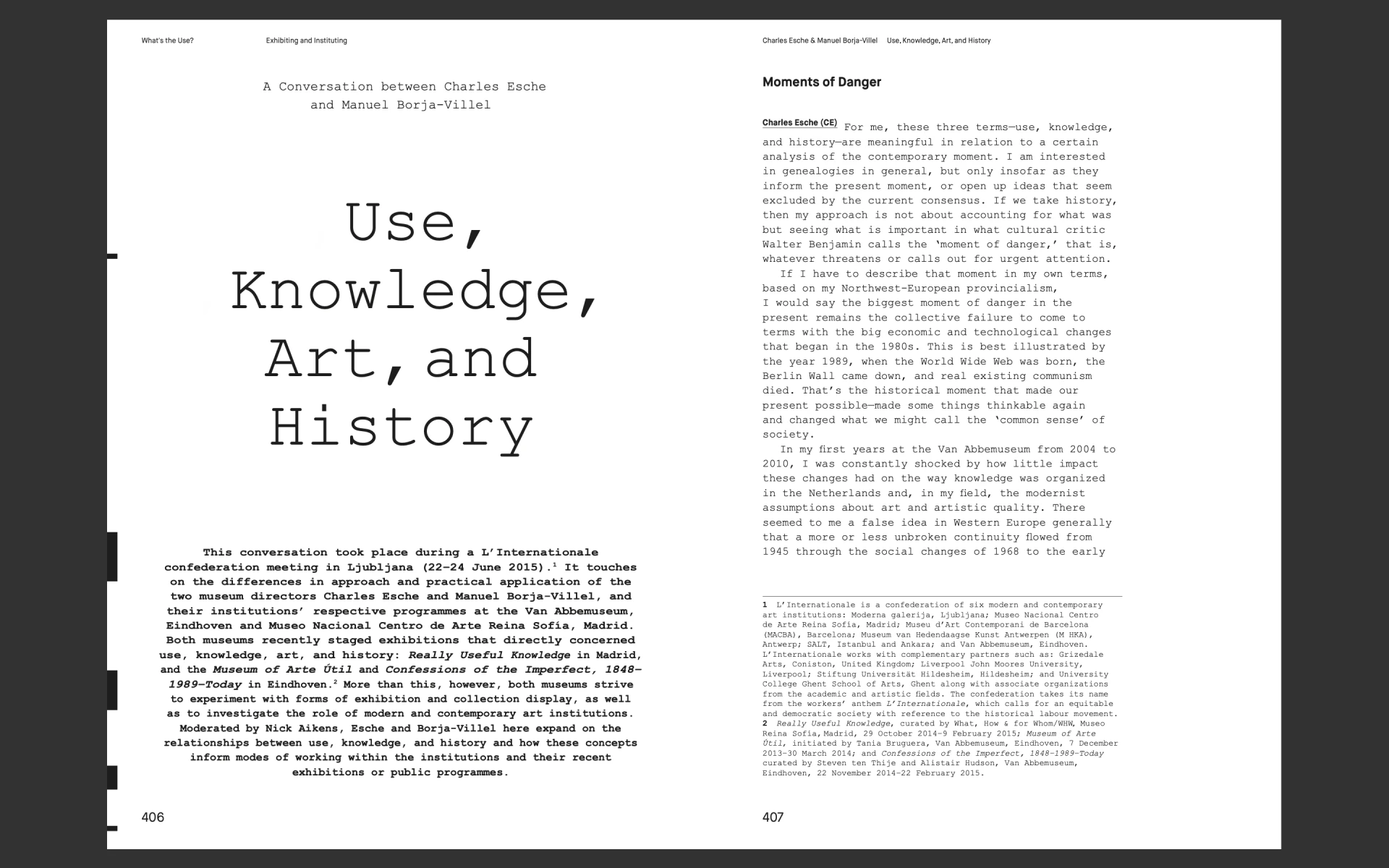What's the Use. Constellations of Art, History, and Knowledge
Edited by Nick Aikens, Thomas Lange, Jorinde Seijdel, and Steven ten Thije
Graphic Design: George & Harrison
Published by L'Internationale and Valiz
Contents
-
1.What’s the Use? – Editors’ Introduction
-
2.Part 1: Constellating History
-
3.Constellating History – Introduction
-
4.The Relation of Art to Use
-
6.I'd Like to Be Karl Ioganson...(But It Won't Be Possible) – Cuban Applications of Arte Útil
-
7.Really, Something?
-
8.Pla Macià – The Garden City Movement and its Modern Afterlife
-
9.Designing Cultural Memory – The Medieval Cathedral as a ‘Monument to History’ in Nineteenth-Century Painting
-
10.History, Use-Value, and the Contemporary Work or Labour of Art
-
11.Part 2: Practicing Art, Knowledge, and Use
-
12.Practicing Art, Knowledge, and Use – Introduction
-
13.Between Hysteria and History – Dialectic of Montage in Jean-Luc Godard’s Work
-
14.Wendelien van Oldenborgh – Beauty and the Right to the Ugly
-
15.Beauty and the Right to the Ugly
-
16.From History to Imagination – Yael Bartana’s Trilogy ‘And Europe Will Be Stunned’
-
17.The Mozambique Institute Project – A Montage of Affect
-
18.Alexandra Pirici & Manuel Pelmuş – Public Collection of Modern Art
-
19.Actualizing History in the Living Body as Subject-Object
-
20.History, Time, Economy, and Museums of the Future
-
21.History at Present – The Revealing Void of Christoph Schlingensief’s Container
-
23.Li Mu – A Man, A Village, A Museum
-
24.Static Gallery’s Architecture of Flows as Extradisciplinary Investigation
-
25.Collective Difficulty, Feminist Interventions – Tamms Year Ten and Socially Engaged Art Praxis
-
26.Time Spent
-
27.Jeanne van Heeswijk – Freehouse – Radicalizing the Local
-
28.Reflexions on Arte Útil (Useful Art)
-
29.Arte Útil and Actioning Desire – Annie Fletcher in Conversation with Tania Bruguera, Part 1
-
30.Part 3: Exhibiting and Instituting
-
31.Exhibiting and Instituting – Introduction
-
32.Beyond the Exhibition? A Speculation on How the Museum Might Be Put to Use
-
33.Museos del Sur
-
34.The Time of Display, the Display of Time – Alois Riegl, Alexander Dorner, and the Changing Historicity of Museum Displays
-
35.No Blood/No Foul – On the Representation and Reinvention of Socially Engaged Artworks
-
36.Using Art as Art – How to Emancipate Work through Art
-
38.The Barricade Has Fragmented and Multiplied
-
39.Exhibiting and Instituting Arte Útil – Annie Fletcher in Conversation with Tania Bruguera, Part 2
-
40.Understanding the Social Power Plant
-
41.Conversing the Action, Narrating History, Eliciting the Present – Notes on Artistic Mediations and Practices Outstripping the Museum's Usual Functions
-
42.Really Útil Confessions – A Conversation between Nick Aikens, Annie Fletcher, Alistair Hudson, Steven ten Thije, and What, How & for Whom/WHW
-
43.Appendix
-
44.Toward a Lexicon of Usership
-
45.Contributors
-
46.Index of Names
-
47.Index of Works of Art, Exhibitions, Projects, Organizations
-
48.Credits of the Images
-
49.Acknowledgements
-
50.Partners
-
51.Colophon
Is art only art insofar as it refuses to be useful? Or can art practices serve a wider purpose in the world? This reader starts from the premise that art is an integral part of the social, economic and political process. Art is best understood through its dialogue with the social sphere, rather than as a ‘thing in itself’. By mapping a diverse terrain of examples and ideas, this book explores the complex interplay between art, use, history, and knowledge. The contributing writers and artists — such as Georges Didi-Huberman, Tania Bruguera, Wendelien van Oldenborgh, and Stephen Wright — demonstrate how in past and contemporary practice these relationships are set up and played out.
Contributors: Nick Aikens, Christina Aushana, Zdenka Badovinac, Manuel Borja-Villel, Tania Bruguera, John Byrne, Jesús Carrillo, Christina Clausen, constructLab, Tamara Díaz Bringas, Georges Didi-Huberman, Charles Esche, Annie Fletcher, Lara Garcia Diaz, Liam Gillick, Melinda Guillen, Jeanne van Heeswijk, Alistair Hudson, Thomas Lange, Li Mu, Wendelien van Oldenborgh, Trevor Paglen, Manuel Pelmuş, Emily Pethick, Alexandra Pirici, Laurie Jo Reynolds, Adrian Rifkin, John Ruskin, Lucía Sanromán, Catarina Simão, Sara Stehr, Subtramas, Steven ten Thije, WHW (What, How & for Whom), Stephen Wright, and George Yúdice.

